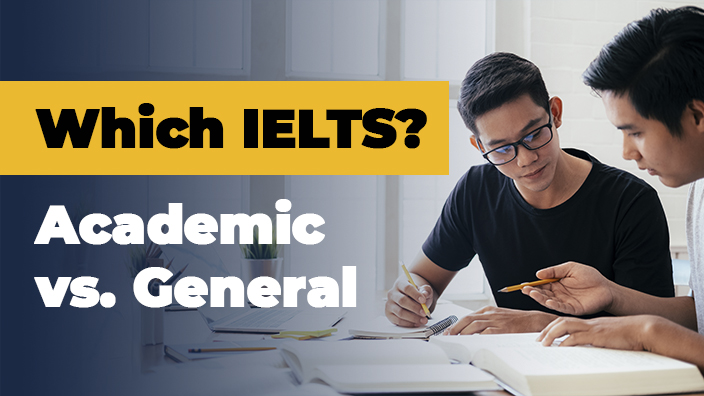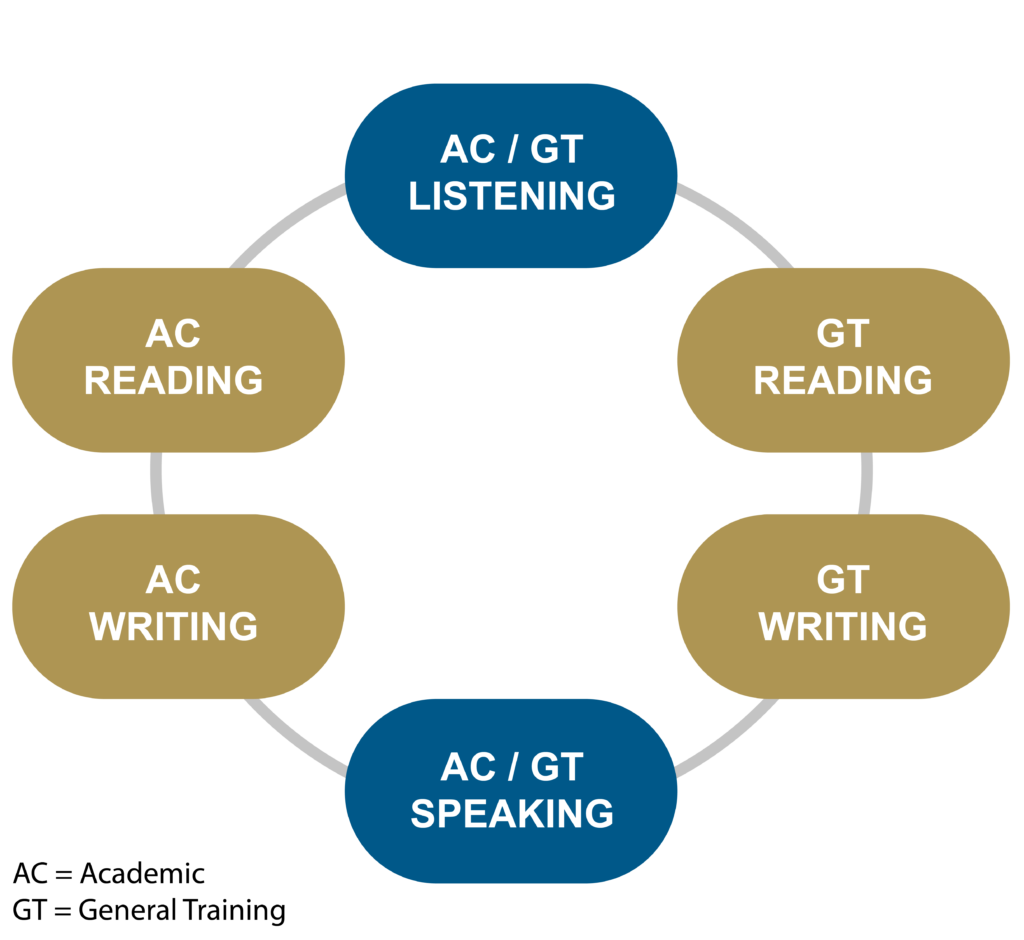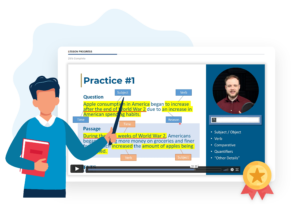
What’s the difference between IELTS Academic and IELTS General Training?
The IELTS test has two different versions that test takers can choose from – Academic and General Training – both of which are used for vastly different purposes.
IELTS Academic
The Academic IELTS test is used to assess your English ability in an academic environment. Individuals who want to peruse post-secondary education or other forms of higher education in English may be required to take this test. A wide variety of Universities across all English-speaking countries require non-native speakers of English to obtain a certain score on the Academic IELTS test before they can enroll. For example, The University of Toronto requires a 6.5 for international students. Every school and country has different requirements, so make sure you double-check with your school for your specific requirements.
IELTS General Training
The General Training IELTS test is used to assess your English ability in a professional/day-to-day environment. Individuals who plan to gain work experience or apply for an immigration or citizenship program may be required to take this test. Canada, for example, requires you to take the test before granting citizenship or certain immigration statuses. Additionally, some employers may prefer non-native speakers to take the General Training IELTS to ensure that their English ability meets the workplace’s standards of communication.
What’s the difference between the tests?
Both versions of the test follow the same format, have the same amount of questions, same type of questions, and take the same time limits. The main difference between the Academic IELTS test and the General Training IELTS test is the content you are given in the reading and writing sections.

The listening and speaking sections of both the Academic and General Training versions of the test are the exact same. Therefore, if you are taking the Academic IELTS test, you will be taking the same listening and speaking tests as someone taking the General Training IELTS test. The only difference is the reading and writing sections of the test.

What the Academic IELTS reading test involves:
The Academic IELTS test uses texts from books, journals, magazines and newspapers that have been written for a non-specialist audience. All the topics are of general interest. They deal with issues which are interesting, recognizably appropriate and accessible to test takers entering undergraduate or postgraduate courses or seeking professional registration. The passages may be written in a variety of styles, for example, narrative, descriptive or discursive/argumentative. At least one text contains a detailed logical argument. Texts may contain non-verbal materials such as diagrams, graphs or illustrations. If texts contain technical terms a simple glossary is provided. (Adapted from ielts.org)
What the General Training reading test involves:
The first section, ‘social survival’, contains texts relevant to basic linguistic survival in English with tasks mainly about retrieving and providing general factual information, for example, notices, advertisements and timetables.
The second section, ‘Workplace survival’, focuses on the workplace context, for example, job descriptions, contracts and staff development and training materials.
The third section, ‘general reading’, involves reading more extended materials with a more complex structure. Here, the emphasis is on descriptive and instructive rather than argumentative texts, in a general context. For example, newspapers, magazines, and fictional and non-fictional book extracts. (Adapted from ielts.org)
What the Academic IELTS writing test involves:
Task 1
Test takers may be asked to describe facts or figures presented in one or more graphs, charts or tables on a related topic; or they may be given a diagram of a machine, a device or a process and be asked to explain how it works. They should write in an academic or semi-formal/neutral style and include the most important and the most relevant points in the diagram. Some minor points or details may be left out.
Task 2
Test takers are given a topic to write about in an academic or semi-formal/neutral style. Answers should be a discursive consideration of the relevant issues. Test takers should make sure that they read the task carefully and provide a full and relevant response. For example, if the topic is a particular aspect of computers, they should focus on this aspect in their response. They should not simply write about computers in general. (Adapted from ielts.org)
The General Training IELTS writing test involves:
Task 1
Test takers are presented with a situation and required to write a personal response in the form of an informal, semi-formal or formal letter. The situations they are asked to write about are common, everyday ones such as: writing to a college accommodation officer about problems with accommodation, writing to a new employer about time management problems they are having, writing to a local newspaper about a plan to develop a local airport, or writing to a renting agency to sort out problems with the heating system in their house.
Task 2
Test takers write a semi-formal/neutral discursive essay – almost identical to the Academic IELTS task 2. The task instructions give information about a point of view, argument or problem. They then tell test-takers how to discuss this, which may involve providing general factual information, outlining and/or presenting a solution, justifying an opinion, and evaluating evidence and ideas.
Topics are of general interest, such as: whether children’s leisure activities should be educational, why families are not so close as they used to be and how they could be brought closer, how environmental problems can be solved, who should pay for the care of old people, or whether smoking should be banned in public places. (Adapted from ielts.org)

Final Thoughts
Are you interested in taking a free placement test for either the Academic IELTS or General Training IELTS? Northern Academic offers free IELTS placement tests to all students.
For more information on our IELTS courses and how we can help you achieve your required band score, please view our IELTS course page or contact us directly.
We look forward to helping you get the band score you deserve!






